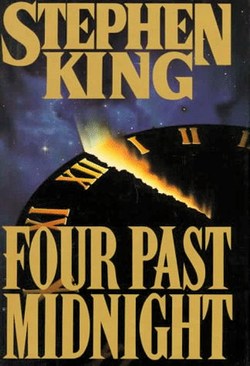In the foreword to Four Past Midnight, Stephen King compares it to his previous collection of four novellas, 1982’s Different Seasons, and writes, “The book you are holding is quite different from the earlier book.” That’s an understatement. Different Seasons was a breakthrough for King, containing two of his best-loved stories, “Rita Hayworth and the Shawshank Redemption” and “The Body,“ which became two of his best-loved movies, The Shawshank Redemption and Stand By Me. King published Different Seasons against the objections of his editor, but it proved that he could write more than “just” horror, and it laid the foundation on which his later reputation (and National Book Award) rests. Four Past Midnight is the Bizarro World version of Different Seasons. Rather than staking out new territory, King tries to recapture his past. The result feels like reheated leftovers.
Different Seasons is steak. Four Past Midnight is SPAM.
King’s collections of stories have always served a purpose. Different Seasons was the exception, nothing more than a pure labor of love for King, but Night Shift was what he gave Doubleday to stall them while he wrote The Stand. Skeleton Crew came out while he was finishing It, a catch-all of his short fiction spearheaded by his editor at Viking who wanted to make sure there was a King book on the shelves in 1985. And Four Past Midnight was released to prop up King’s name at one of its lowest points: 1990.
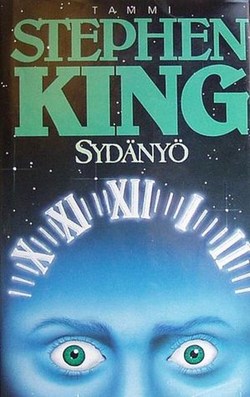 King hadn’t found his footing in the third part of his career. Part one spans his breakthrough years, running from Carrie through The Stand. Then came part two, which ended with It. Then came part three. Since 1986, King had flirted with retirement, written a bona fide classic (Misery), albeit one that made his more sensitive fans feel picked on, turned out a science fiction best-seller that was regarded as a disappointment (The Tommyknockers), two fantasy novels (The Eyes of the Dragon, The Drawing of the Three), written captions for a book of gargoyle photos, and taken a year off.
King hadn’t found his footing in the third part of his career. Part one spans his breakthrough years, running from Carrie through The Stand. Then came part two, which ended with It. Then came part three. Since 1986, King had flirted with retirement, written a bona fide classic (Misery), albeit one that made his more sensitive fans feel picked on, turned out a science fiction best-seller that was regarded as a disappointment (The Tommyknockers), two fantasy novels (The Eyes of the Dragon, The Drawing of the Three), written captions for a book of gargoyle photos, and taken a year off.
He’d also started to get sober. The Dark Half, his latest book, had sold well, but it ended on a note of deep mourning (in contrast to his usual determination to give his characters a happy ending) and had been criticized for being too weird and too violent. His next book was a reissue of The Stand called The Stand: The Complete and Uncut Edition which added back in about 150,000 words cut from the original. It sold 160,000 copies, a bestseller for any other writer but about 10% of what The Tommyknockers or The Dark Half had sold.
His publishers were getting worried. Stephen King meant horror, yet he was mostly publishing (and republishing) science fiction and fantasy these days. So when King suggested that he give them four novellas that would all be straight-forward horror they jumped for joy. The marketing campaign was basically, “This time Stephen King gives you what it says on the box!” They printed about 1.5 million copies and let the readership, hungry for that old Stephen King magic, drive it to number one on the New York Times bestseller list. Looking back on it over 20 years later you just have to shrug and figure there’s no accounting for taste.
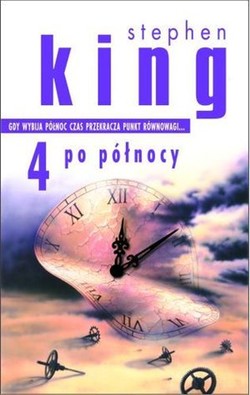 “The Langoliers”
“The Langoliers”
Ten people get on a plane and fall asleep. When they wake up, everyone else has disappeared. Turns out they’ve flown through a time hole into the past and they wind up landing at an airport in a new, desolate dimension where they must try to figure out how to get home. “The Langoliers” showcases the best and worst of King’s writing. Vivid, weird imagery abounds. Empty chairs contain the ephemera left behind by vanished passengers: hip replacement pins, fillings, pacemakers, toupees. The airport they land in seems to have run out of time and it’s a lifeless, gray, bleak otherworld where food has no taste, sound is deadened, and matches don’t light.
Then again, this is basically the 1961 Twilight Zone episode, “The Odyssey of Flight 33” writ large and given a happy ending. Like The Dark Half, it feels like a book where King has read about himself and decided to deliver what he’s heard people liked about him. Stephen King writes about people under stress going insane (“The Mist,” The Stand, The Shining)? Then he’ll have one. Psychic teenagers (Firestarter, Carrie)? Let’s have one! Brave, resourceful young boys (‘Salem’s Lot, It, “The Body”)? Let’s have one! Like a cheese pizza with a stuffed crust and extra cheese, this one’s oozing grease. But nothing can top the hilarity of the ending.
After much expertly-deployed ominous foreboding and foreshadowing that the Langoliers are coming—Tommyknocker-like creatures that have crawled out of a childhood rhyme—we finally see them and we get…Pac-Man? They are described as hyperactive beachballs that gobble up everything in their paths, bouncing and gobbling, and gobbling and bouncing. It’s a jolt of hilarity that the story doesn’t recover from. Hungry beachballs just don’t scare anyone.
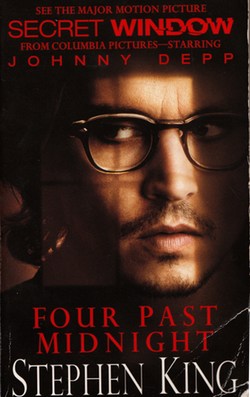 “Secret Window, Secret Garden”
“Secret Window, Secret Garden”
First there was Misery, then there was The Dark Half, then there was “Secret Window, Secret Garden.” Stephen King has always been fascinated by what makes Stephen King tick, and this is his last story about a writer before he went whole hog and wrote his last word on the subject, the excellent On Writing. In this story, the terribly named Mort Rainey is in the middle of a divorce and so he retreats to his cabin in Maine to hole up and write. A nutty farmer and amateur, unpublished author named John Shooter shows up claiming that Rainey stole one of his stories and published it as his own, and the more Rainey tries to prove his innocence the deeper he wriggles into Rainey’s trap. In the end, it turns out that Rainey has gone insane and is committing Shooter’s crimes himself, but then in a double twist it’s revealed that Shooter is actually a character Rainey wrote who is so realistic that he came to life. So it’s kind of Rainey, but kind of not.
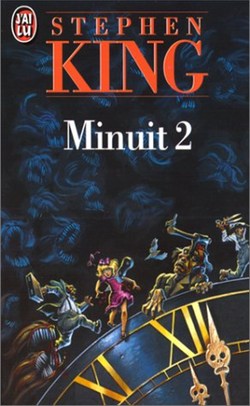 Stephen King’s relationship with plagiarism is complicated, and it is explored with zero depth in this story. King has long been a target of nuisance suits in which folks target him for accusations of plagiarism, and he was just coming off two confrontations over Misery when he wrote this story, one involving a man who broke into his house with a fake bomb claiming that King had stolen his manuscript, the other from Anne Hiltner who sued King for basing Misery on her life without permission (she would later sue him over stealing Kingdom Hospital from her, too). There’s a lot of this in John Shooter, but King also seems to have forgotten the times his own friends have accused him of lifting their ideas. His longtime friendship with George McLeod came to an end when McLeod contacted King and told him that his story, “The Body,” was based a novel McLeod had been writing and told King about a long time ago.
Stephen King’s relationship with plagiarism is complicated, and it is explored with zero depth in this story. King has long been a target of nuisance suits in which folks target him for accusations of plagiarism, and he was just coming off two confrontations over Misery when he wrote this story, one involving a man who broke into his house with a fake bomb claiming that King had stolen his manuscript, the other from Anne Hiltner who sued King for basing Misery on her life without permission (she would later sue him over stealing Kingdom Hospital from her, too). There’s a lot of this in John Shooter, but King also seems to have forgotten the times his own friends have accused him of lifting their ideas. His longtime friendship with George McLeod came to an end when McLeod contacted King and told him that his story, “The Body,” was based a novel McLeod had been writing and told King about a long time ago.
What’s missing from “Secret Window, Secret Garden” is a sense of guilt on the part of Rainey. What we get instead is a story with a stock villain, a nice concept, and a twist ending that absolves the writer of any responsibility. You’d think that King, accused both with grounds and not, of the worst crime a writer can commit would have something more interesting to say on the subject, but he doesn’t. That didn’t stop the movie adaptation, Secret Window, starring Johnny Depp, from becoming one of his highest-grossing film adaptations, falling just short of Stand By Me but well ahead of The Shining.
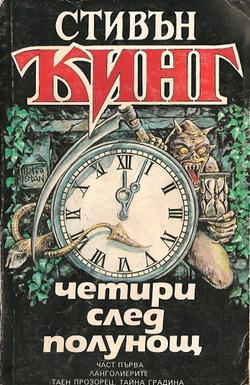 “The Library Policeman”
“The Library Policeman”
According to King, this story had its roots in a fear of “The Library Policeman” related to him at the breakfast table by his youngest son, Owen, one morning. Things start well, as Sam Peebles, a smalltown insurance man struggles to write a speech for the local Rotary Club. Desperate to spice things up, he heads to the library for a book of jokes and sentimental stories to sprinkle on top of his after-dinner presentation, and lo and behold! they work. In the wake of his speech’s success, Sam forgets to return his book on time and soon he’s being stalked by the Library Policeman. So far, so good, but then King has to add in a haunted library, an alien sex monster librarian, an AA subplot, and his latest passion (which would blossom into Dolores Claiborne and Gerald’s Game): sexual molestation of children.
There’s no doubt that King cares very much about children, and sexual abuse clearly alarms and troubles him on a very genuine level, but it’s something he handles in a clumsy fashion here. His too-neat device is that Sam was once molested by a lisping homosexual claiming to be a library policeman, and now he must confront these repressed memories from his past in order to defeat the real library policeman that stalks him in the present. While the library policeman himself does offer a few chills, King soon loses sight of him and winds up focusing on the alien sex monster librarian instead, and the novella winds up feeling like a thinner, shorter duplicate of It.
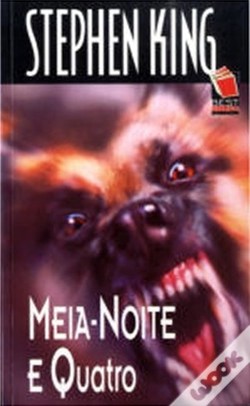 “The Sun Dog”
“The Sun Dog”
This novella was supposed to serve as connective tissue between The Dark Half and Needful Things, which was already being advertised as King’s next book and the one that would end his Castle Rock stories. Like a lot of the stories in Four Past Midnight, “The Sun Dog” contains a neat idea, but it squanders its energy with a lot of wheel-spinning on things that do nothing to drive the story forward. A kid gets a polaroid for his birthday but after it’s damaged in a fall the only pictures it spits out show a dog approaching the camera. In every picture, he’s just a little bit closer (See: M.R. James’s “The Mezzotint” for the origin of this idea). The kid puts two and two together and figures that once the dog reaches the edge of the frame it’ll emerge into the real world and bite him in the face, or hump his leg, or something. Again: so far, so good.
But just when the story should be gathering steam, it swerves into a long digression obsessed with Castle Rock continuity, focusing on the junk shop dealer who buys the camera off the kid. Knowing that this junk shop dealer is the uncle of Ace Merrill (of “The Body” and later Needful Things) doesn’t add a lick of value. King talks about “The Sun Dog” being a link to Needful Things but none of its characters show up in that book, making one wonder why King thought it was necessary in the first place. Although it starts strong, by the end “The Sun Dog” isn’t bringing anything new to the table.
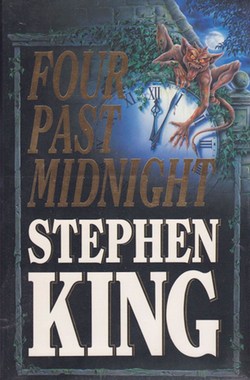 The writing in this collection is hesitant. Often strong ideas and opening images collapse under the weight of endless digressions, excessive plot twists, and unnecessary continuity porn. Rarely has King been so lacking in confidence in his own writing. While The Tommyknockers might have been out to lunch, the book is written in clear, strong, confident prose that carries you along in its mad rush. Four Past Midnight, on the other hand, resembles the first two-thirds of The Dark Half and it feels, again, like a man trying to find his way. Given that King wrote these stories as he was coming off a year-long bout of writer’s block, during which he claims that anything he tried to write “fell apart like tissue paper,” you can see why it all feels so hesitant and fretful.
The writing in this collection is hesitant. Often strong ideas and opening images collapse under the weight of endless digressions, excessive plot twists, and unnecessary continuity porn. Rarely has King been so lacking in confidence in his own writing. While The Tommyknockers might have been out to lunch, the book is written in clear, strong, confident prose that carries you along in its mad rush. Four Past Midnight, on the other hand, resembles the first two-thirds of The Dark Half and it feels, again, like a man trying to find his way. Given that King wrote these stories as he was coming off a year-long bout of writer’s block, during which he claims that anything he tried to write “fell apart like tissue paper,” you can see why it all feels so hesitant and fretful.
The last major project he’d attempted was Insomnia, a book he’d given up on after spending four months in 1989 trying to write. (“It’s not good,” he said in an interview. “It’s not publishable.”) King’s fear had always been that when he stopped drinking, he’d stop writing, and having to ditch a novel after four months of work couldn’t have been easy. These stories were honed and revised in the aftermath of that harrowing experience. Unfortunately, it shows.
Grady Hendrix is the author of Satan Loves You, Occupy Space, and he’s the co-author of Dirt Candy: A Cookbook, the first graphic novel cookbook. He’s written for publications ranging from Playboy to World Literature Today and his story, “Mofongo Knows” appears in the anthology, The Mad Scientist’s Guide to World Domination.










